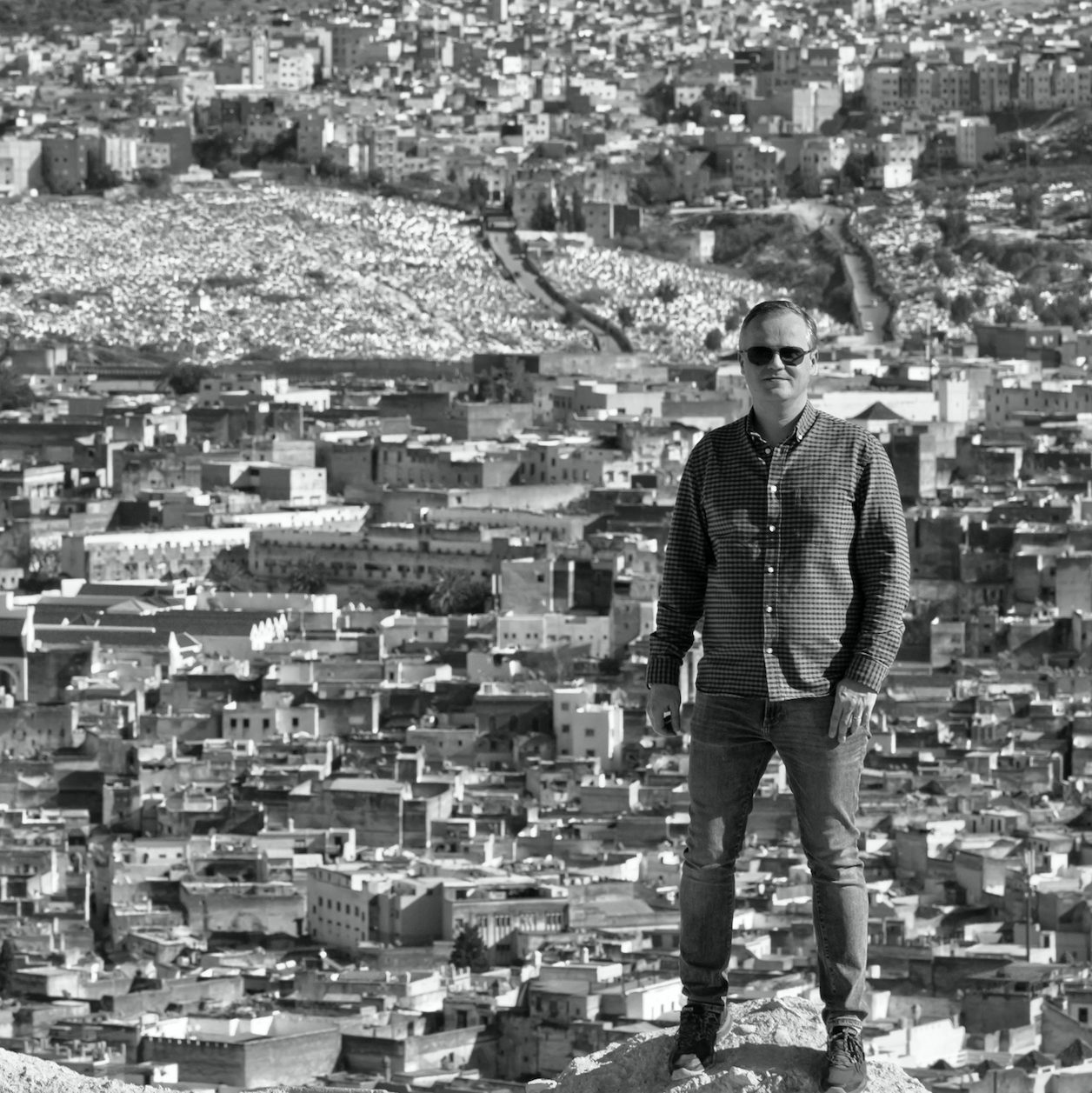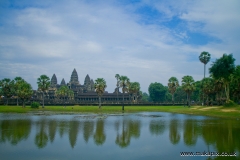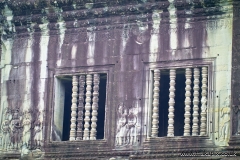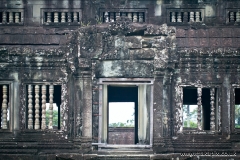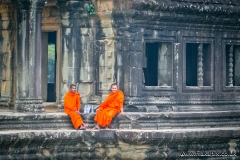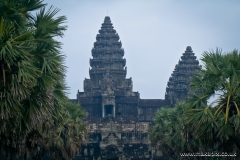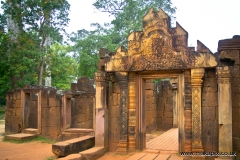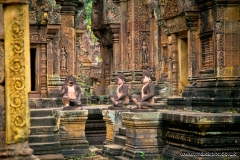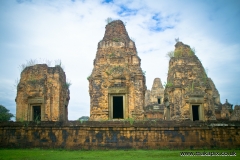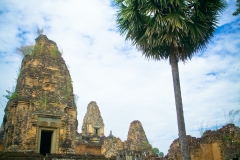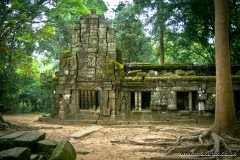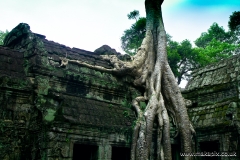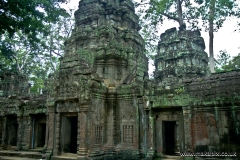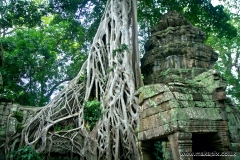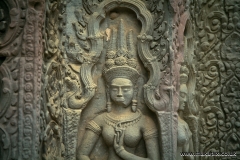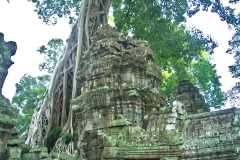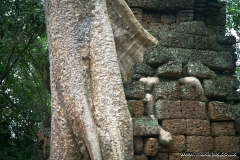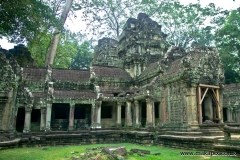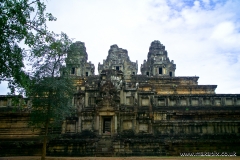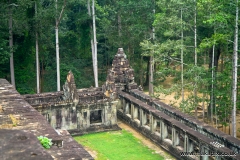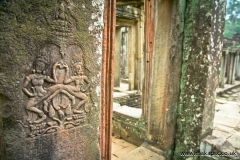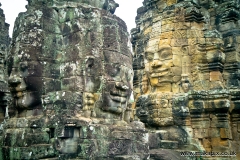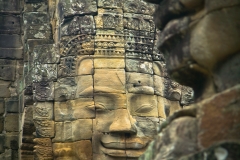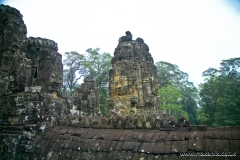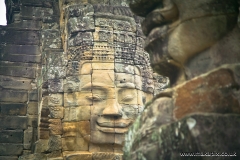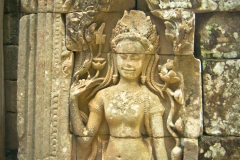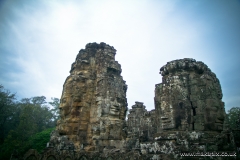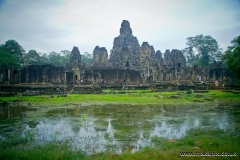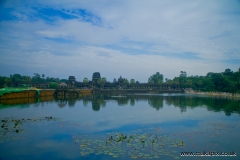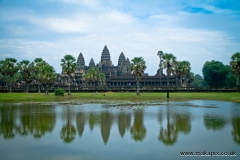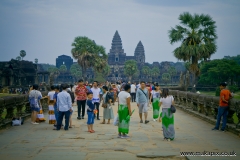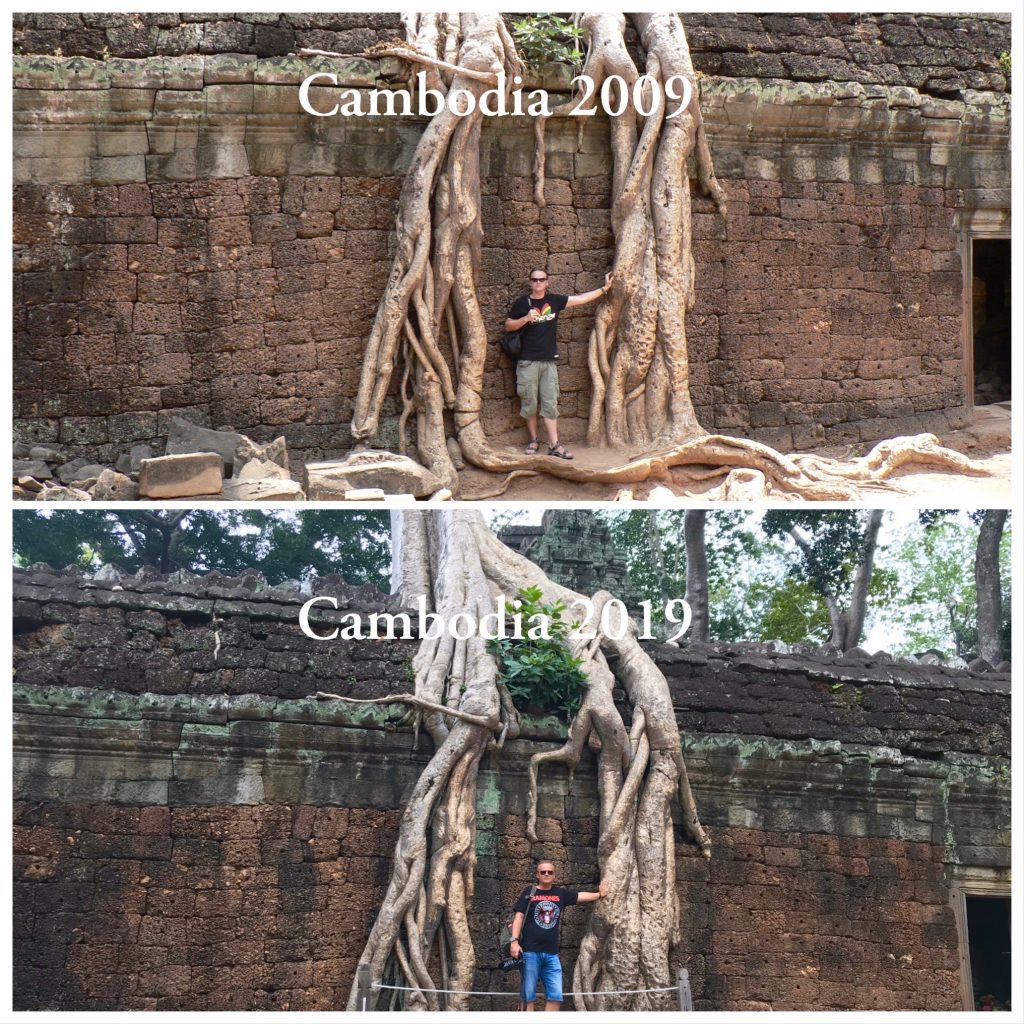Angkor Wat is a temple complex in Cambodia and is the largest religious monument in the world, on a site measuring 162.6 hectares. Originally constructed as a Hindu temple dedicated to the god Vishnu for the Khmer Empire, it was gradually transformed into a Buddhist temple towards the end of the 12th century.
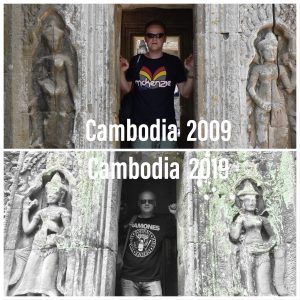
Banteay Srei is a 10th-century Cambodian temple dedicated to the Hindu god Shiva. Located in the area of Angkor, it lies near the hill of Phnom Dei, 25 km north-east of the main group of temples that once belonged to the medieval capitals of Yasodharapura and Angkor Thom.
Pre Rup is a Hindu temple, built as the state temple of Khmer king Rajendravarman and dedicated in 961 or early 962. It is a temple mountain of combined brick, laterite and sandstone construction.
Ta Prohm is the modern name of the temple in Angkor, built in the Bayon style largely in the late 12th and early 13th centuries and originally called Rajavihara.
Ta Keo is a temple-mountain in Angkor, 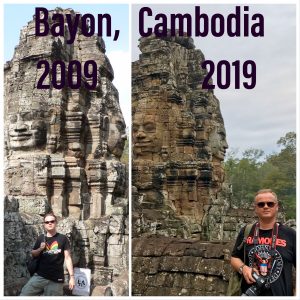 possibly the first to be built entirely of sandstone by Khmers.
possibly the first to be built entirely of sandstone by Khmers.
The Bayon is a richly decorated Khmer temple at Angkor in Cambodia. Built in the late 12th or early 13th century as the state temple of the Mahayana Buddhist King Jayavarman VII, the Bayon stands at the centre of Jayavarman’s capital, Angkor Thom.
- Angkor Wat was built without the aid of any machinery. The site was constructed between 802 and 1220 AD when machinery wasn’t available.
- It took 35 years to build with the help of approximately 1,000 elephants in addition to the 300,000 labourers. A huge five million tons of sandstone was used to build the religious site which covers an area of 208 hectares.
- It attracts two million tourists a year.
- Cambodia is incredibly proud of Angkor Wat and an image of it is included on the country’s flag. Cambodia and Afghanistan are the only two countries who display their national monument on their flag. Illustrations of Angkor Wat also appear on denominations of the riel, the Cambodian currency.
- The aptly named Angkor Wat translates as ‘a city of temples’. Angkor means ‘city’ or ‘capital city’ in Khmer, the Cambodian language, and Wat translates as ‘temple grounds’.
- Paramount Pictures paid $10,000 a day to film in the temple Ta Prohm for the 2001 film ‘‘Lara Croft: Tomb Raider’. It was after filming in Cambodia that Angelina Jolie made the decision to adopt her Cambodian son Maddox.
- Originally built for the Hindu religion, Angkor Wat became Buddhist in the late 13th century. The temple is still used for worship today.
- After 1432 the city of Angkor was forgotten for a few centuries with passing Buddhist monks occasionally stumbling upon the ruins yet not understandings its origins. French explorer Henri Mouhot discovered Angkor Wat in 1860. Dying of fever in Laos a year later, people learnt about the temples in his writings published posthumously.
- Angkor Wat went through years of looting and many statues were decapitated for sales to private collectors. It became an UNESCO World Heritage Site in 1992, which encouraged an international effort to prevent further damage.
- Angkor Wat faces the west which is unusual when compared to similar temples in the region, which commonly are directed towards the east. As the west is associated with death it’s believed the site was built for funeral.
